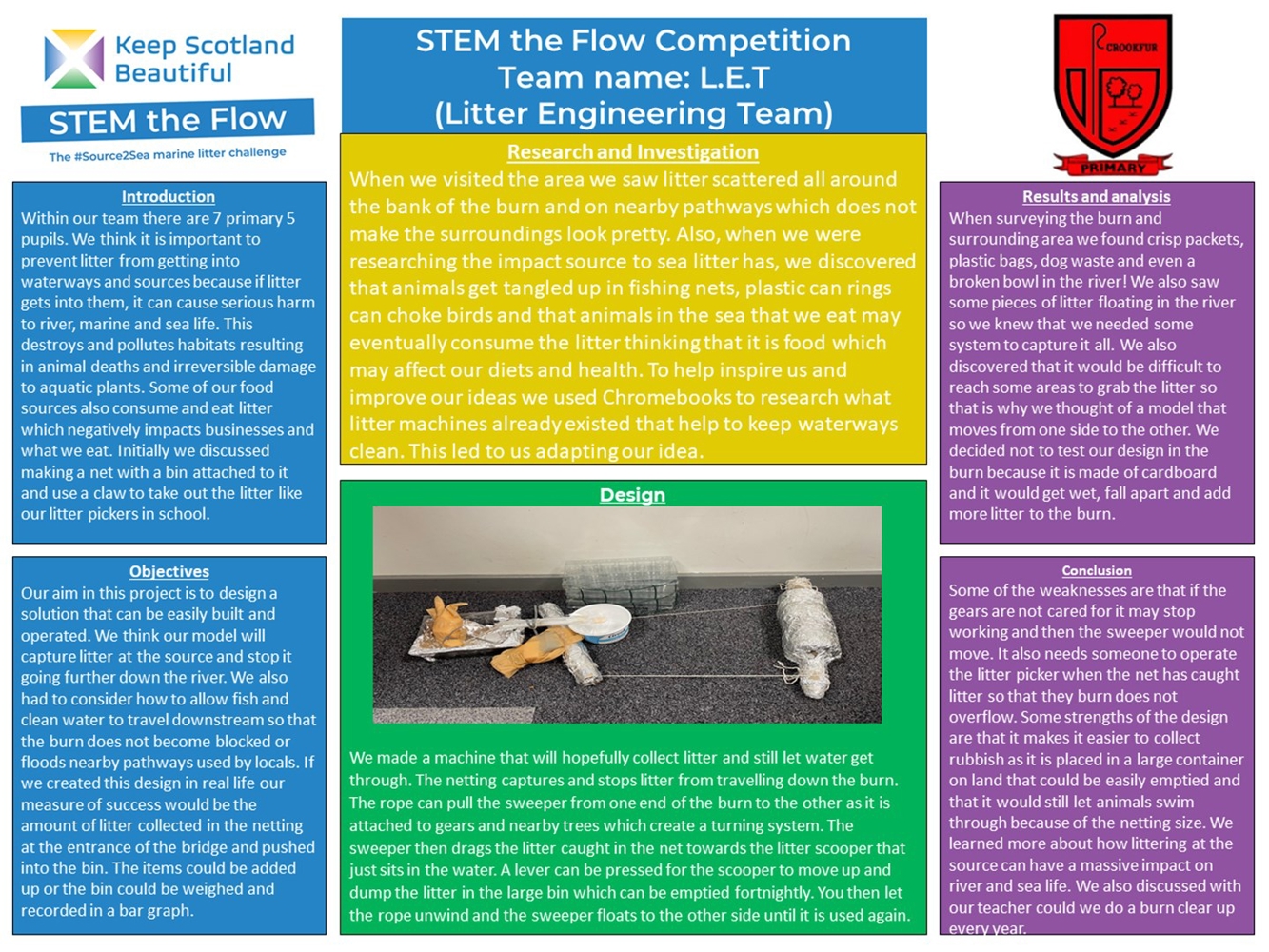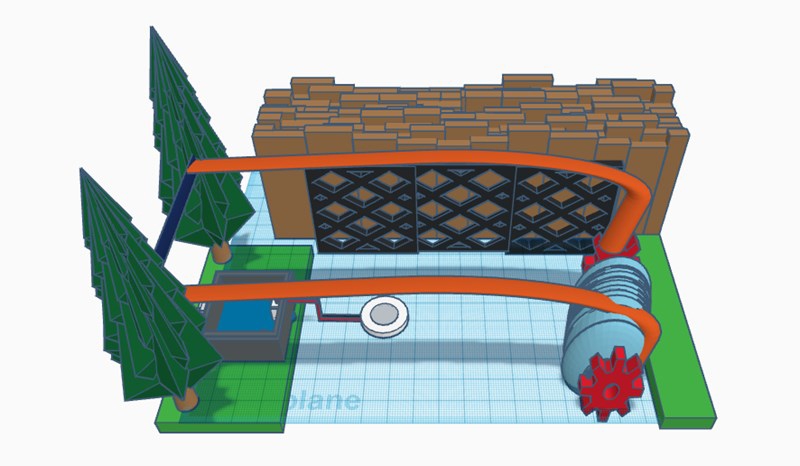Crookfur Primary School
Project: Litter Engineering
At Crookfur Primary School we are looking to renew our Eco-Schools Green Flag status through the efforts of both the Eco Committee and class projects. Our primary 5 stage are currently participating in the LEAF programme and saw the STEM the Flow competition as a brilliant opportunity to broaden their knowledge of source of sea marine litter and its adverse effects on ecosystems and wildlife.
The class and along with their teacher identified a suitable area, Capelrig Burn, that could be explored. The class first surveyed the embankments taking note of the type of litter and then carefully studied the burn itself to determine how well it is maintained. Some of the materials spotted by the pupils that could harm both animals and aquatic plants included plastic bags, cans and even a bowl!
Following this, the pupils learned about how littering at the source has a broader impact on other habitats which led to the class watching videos on the Great Pacific Garbage Patch. Afterwards, pupils began to discuss potential ideas of how to capture litter and conducted further research online by studying devices that currently exist to collect litter from around the world. This work acted as the catalyst for them beginning to sketch their designs from different perspectives as well as labelling different parts listing the materials needed. From this, pupils realised that their ideas needed to have some element of sustainability, operate with limited technology and minimum human assistance to be cost-effective. During this phase, the class teacher and pupils coordinated with parents and guardians by requesting for recyclable material that could assist with the creation of the prototypes.
Scientific Poster


The next stage in the process was to use Tinkercad - Computer-aided design (CAD) software. This allowed students to transform their drawings into 3D models. In addition, students were encouraged to use Google Slides to record relevant information that would help them with the design process such as researching appropriate materials to use and any information that could help with their science poster which the teacher supported with. In groups the children decided different roles, allocated responsibility and strived to effectively coordinate – all of these skills further helped to develop independence, teamwork and resilience. After a couple of weeks all groups had successfully created Tinkercad 3D models which they used to help build their prototypes out of the donated materials and they shared their presentations with peers.
The chosen model by Litter Engineering Team, demonstrated creativity, consideration and ingenuity. The students in this group recognised the difficulty of safely capturing and extracting litter in the burn so they devised a device that could travel from one side to the other using gears and ropes which they had learned about in a previous science lesson. The rubbish collected at the net that covers the gap of the bridge would then be dragged to a platform that is submerged in the water and, using a lever, would then drop the litter into a larger container on land that could be emptied without anyone wading into the burn.
In groups the children decided different roles, allocated responsibility and strived to effectively coordinate – all of these skills further helped to develop independence, teamwork and resilience.
We support the 


